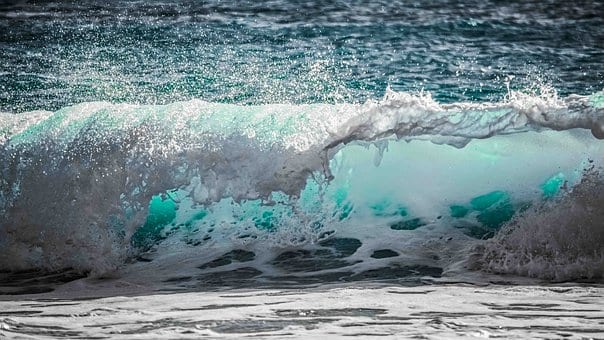The idea of a beach day might conjure up a variety of imagery: splashing through the waves, shelling or just relaxing on a towel. Usually the most uncomfortable aspect about it would be sand in swimsuit bottoms or a sunburn- not tons of dead animals, stinging sea air and deadly neurotoxins. While Florida’s Gulf Coast battles the red tide during National Water Quality month, here’s what you need to know about the algae bloom before you head to the beach.
According to the National Oceanic and Atmospheric Administration, harmful algae blooms or HABs, occur when colonies of algae grow at high rates, creating toxic or harmful effects on humans and marine life. The “Red Tide,” coined for the blood-red algae that blooms in Florida’s Gulf Coast, is one of the best known HABs in the nation. While not all algae blooms are harmful, Florida’s Red Tide can prove fatal to marine life, dangerous for human fish or shellfish consumption and renders the sea air painful to breathe in.
It is common for the red tide to appear in Florida at least once per year, but this summer’s bloom has been particularly lethal. Upon stepping on a beach impacted by red tide, it is easy to see the damage. Dead fish and sea life litter the coast, and humans are very scarce- and those who do choose to have a beach day often find difficulty breathing after an extended period of time. The Inertia reported that over 100 tons of dead animals have washed up onto shore, including 12 dolphins in one week. The organism, karenia brevis, can release a deadly neurotoxin, causes depolarization of nerve cells, immune depression, bronchial constriction and haemolysis, according to The National Center for Biotechnology Information.
While there have been many theories about what is to blame for the bloom, this year’s red tide has been directly linked to the agriculture industry. When run off dumps large amounts of nutrients and fertilizers into the ocean, the algae flourishes.
Beyond just dying fish, this epidemic can have unforeseeable impacts on a variety of other systems. When fish become infected, larger animals higher in the food chain lose a portion of their diet, so even when the tide isn’t toxic enough to take down bigger marine life itself, starvation can play a hand in the total death count. In addition, Florida’s economy thrives on tourism. With the state’s proud sandy beaches now unswimmable and covered in carcasses, tourist towns are feeling the burn.
Governor Rick Scott has since declared a state of emergency in seven counties, which means funding can be used to help the issue- although it likely won’t resolve it. In the meantime, it is recommended that residents of these areas limit their beach time until a cold snap stops the bloom.


